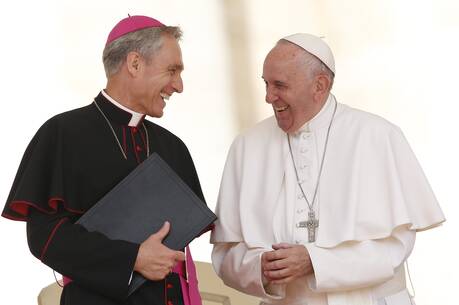Do Americans think their public schools are in what Gov. George W. Bush has been calling an education recession? It depends. Which Americans and which schools? Parents in Scarsdale, Grosse Pointe, New Trier Township and Beverly Hills do not seem to think their local public schools need radical overhaul. Why should they? The schools in these affluent suburbs are amply funded, have first-class facilities and perform satisfactorily.
Many parents in the inner cities, on the other hand, are worried that in their neighborhood schools their children run a good chance of encountering violence and little chance of learning enough to post good scores on standardized tests. That is not necessarily their teachers’ fault. There are certainly dedicated and effective teachers in those big-city schools, but they are slowed down by various roadblocks.
Andrew Kossberg, a teacher in the St. Louis, Mo., area, listed some of those obstacles when he posed a question during the third presidential debate last month: In the school district in which I work and in countless others across the nation, we face crumbling school buildings, increased school violence, student apathy, overcrowding, lack of funding, law suits.... The list goes on. I could mention low teacher pay, but I won’t.
If well-to-do families who prefer city life are confronted with the schools Mr. Kossberg described, they can choose to send their children to private schools. Most low-income families do not have this option of voting with their feet.
For a few lucky families one or other of two alternatives to failing public schools may be available: vouchers that can be used to pay tuition fees in private schools, including those that are church-sponsored; or small public schools known as charter schools. At this moment, however, there are only three publicly financed voucher programs nationwidein Milwaukee, Cleveland and Florida. Moreover, the programs in Cleveland and Florida are currently under attack in the courts.
The charter-school experiment cannot be legally challenged, because it exists within the public school system itself. It is based on the assumption that effective principals and teachers are often thwarted in traditional public schools by a smothering weight of bureaucratic supervision and regulation. The charter school movement, which began in 1991, aims to raise student achievement by creating small, publicly financed schools that are largely autonomouswith something like the independence of good private schools.
These new schools may be charteredthat is to say recognized and franchisedby a local school district, a state education department or a university with ties to public education. There are now about 2,000 charter schools in some 34 states. Most have been set up within the past three years and most are small. Together they enroll about half a million students, or roughly 1 percent of the total national school enrollment.
Some charter schools have developed out of traditional public schools, but most have been started from scratch. People who worked elsewhere as teachers or principals seized this chance to experiment and innovate. A number of chartered elementary schools are run by companies that hope eventually to operate them at a profit.
President Clinton has no enthusiasm for vouchers, but he is a great fan of charter schools, because he knows the ideal of school choice appeals to voters. Last May in St. Paul, Minn., he gave a speech at City Academy, the first charter school in the country. The one problem we have had, he said, is that not every state has had the right kind of accountability for its charter schools. Some state laws are too loose; some are too restrictive.
Mr. Clinton did not point out that the very concept and existence of charter schools raises an earth-shaking question for the established structure of U.S. public education. If there are now tax-supported schools that are quite independent of local school boards, why must the nation continue to assume that only publicly controlled schools can be publicly financed?
In Great Britain, Canada, Germany, Belgiumand even in Australia, which has a no establishment clause like that of the U.S. Constitution’s First Amendmentboth the public and the private school systems are governmentally supported. This gives all families a choice among schools that are large or small, religious or secular, innovative or traditional.
In the United States there has for decades been discussion of school reform, but an old wisecrack fits here: After all is said and done, there’s a lot more said than done. The rise of charter schools, imperfect as they may be, suggests that a really new definition of public support for education may be an idea whose time is coming.







